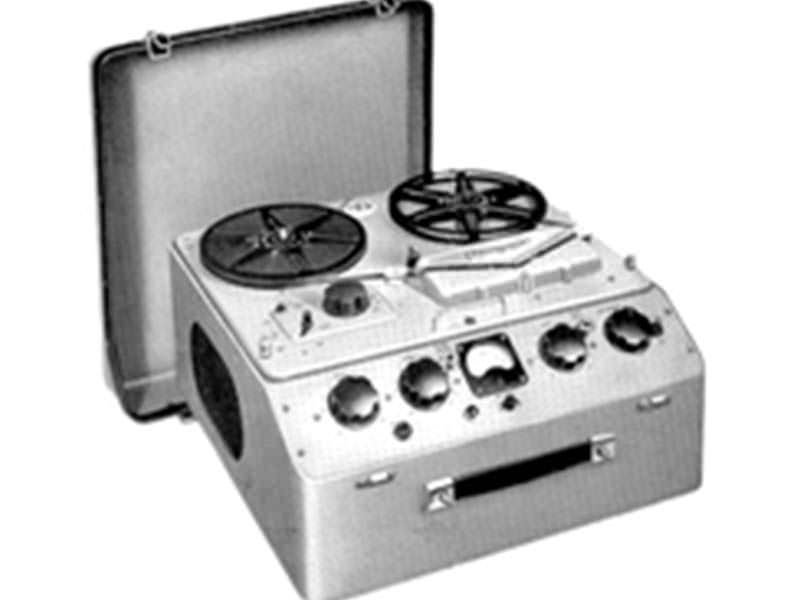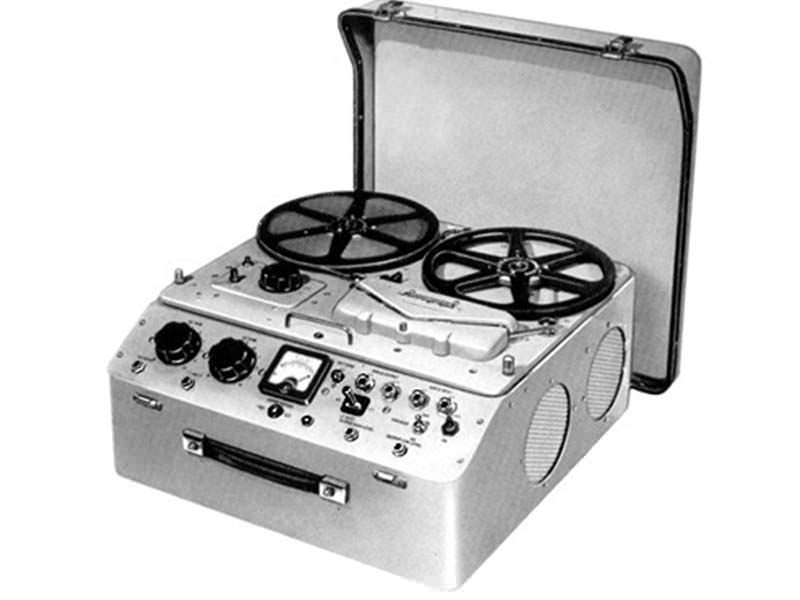Technical Details
Brand: Ferrograph
Model:3 S
Category:Vintage
Application:Consumer
Electronics:Solid State
Equalization:IEC
Country of Manufacture:United Kingdom
Release dates:1956 - 1959
Tracks:1/2 Rec/PB
Speeds: 3 3/4, 7 1/2
Max Reel Size("): 10.5"
Number of heads: 3
Head Composition: Permalloy
Head Configuration: Stereo
Auto Reverse?:No
Voltage(s): 220-240v
Sound quality rating:6 / 10
Long-term reliability rating: 6/ 10
Additional Details
Description
The Stereo Add-on was an early attempt by Ferrograph to provide a stereo replay unit.
This additional amplifier could be attached to the standard Series 3 recorder. It required the user to fit a Stereo replay head in the dummy head position, and then allowed replay of commercially
available reel to reel pre-recorded tapes.
Whilst not the most elegant of solutions, it was one that many other manufacturers also used, including Tandberg, and Simon.
(information courtesy of George West)
Specifications same as Series 3.
Additional Info
FROM 1958
FIRST impressions of this machine are most favourable. The controls are very easy to operate and the instrument has a most professional look about it. Also it is very simple to prepare for operation, but it was a little difficult to see which input plug fitted into the inputs, on the back.
The hum level of the stereo playback head was found to be absolutely Inaudible on both tracks The level measured. -52 dB (reference peak level), was thought a most impressive figure. At ordinary listening level the amplifier hiss was negligible. Only what tape hiss there was present on the tape, came through on the loudspeaker.
Unfortunately, the machine sent for review, had a replay and record characteristic of American NARTB standard, and English tapes sounded definitely down in top. It was found necessary to keep the treble control at maximum to get a reasonable level response from the speakers. Also it was found that the bass response tailed off very quickly below 50 cycles and thus all music definitely sounded lacking in bass. Also, the middle frequencies were found to have too much lift if the high ones are to be reproduced at the same level as the low ones.
The 15-ohm output for speakers is most useful and the audition tests were carried out using two Tannoy 15-inch dual concentric speakers. There was only just enough power to drive these speakers on peaks but the stereo effect was thoroughly pleasing. It should be mentioned that occasionally the tape jumped a little on the heads giving a momentary drop out. The fault was definitely on this machine and not on the tape.
It was a little difficult sometimes threading the machine because the tape tended to catch on the left of the capstan, but otherwise loading was reasonably easy. The rewind speed is extremely fast (perhaps a little too fast for rewinding extra play tape). It is very easy to have very nasty accidents with recorders having high rewind speeds.
Wow and flutter were very low; in fact, no wow at all could be detected from piano recordings-surely the most difficult test for wow and flutter, other than pure tone.
Finally, I would like to say that all the playback controls were very easy to see and operate and I found for instance that the channel balancing is most useful for balancing some pre-recorded tapes at dissimilar levels on the two tracks.
TECHNICAL REPORT:
Taking into account the fact that the machine was a NARTB one, I still feel that there was a lack of extreme top response. However, this could certainly be put right by carefully setting the playback equaliser at the factory.
The background hiss when using the recorder monaurally was very low and the frequency response for monaural reproduction was within the specification set by the makers.
I feel that the choice of an NARTB characteristic for an amateur, or even semi-professional tape recorder, can be dangerous: because although it naturally leads to a lower hiss level from the tape, when recording instruments such as muted trumpets with very high harmonics, it is very easy to overload the tape at these high frequencies.
The NARTB characteristic, however, is most useful when it possible to monitor the recording while it is being made so that any distortion can instantly be heard. It should be noted that this is the main reason why in this country and in Europe, the CCIR characteristic is considered the better one for domestic machines, as well as usually being used for professional ones.
One or two points about operation of the recorder generally as a recorder, as well as a replay machine; The light on the front panel is worked from the HT supply and not directly from the mains; like all the latest Ferrographs and so it will not light up until the machine is warmed up. The rev. counter is most useful, and with this it is possible to find any item on the given tape very quickly.
While looking at the manual of this complete unit, it struck me that with a very simple modification it would be possible to use the machine as a monaural one, monitoring the tape off the stereo head, using the top track and thus listening to the recording on the tape while it is being made.
This would not need a large amount of switching, but would need a rearrangement of the power supply wiring and also signal wiring to the monitor loudspeaker amplifier on the main recorder. This modification would only entail extra current for the monitor head equaliser valves, which would not be too large a drain on the main HT supply.
As is usual with all Ferrographs, there is an auxiliary power socket which can be used for operating a small mixer unit or radio tuner if the machine is being used monaurally.
This part of the review which is concerned with monaural uses of the machine applies also to all the latest Ferrograph monaural recorders which are basically identical to the 3S recorder, without the Stereo-ad unit. Having used Ferrographs for many years professionally, I would say that not only is it a tape recorder that easily meets its specification, but is a thoroughly reliable and robust machine.



